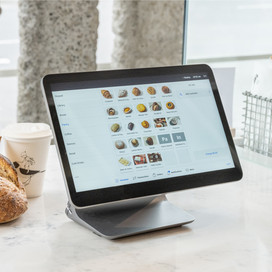Table of contents
Are you looking for small online business ideas to start your own business from home? Do you love clothing? If you’re nodding profusely, it sounds like you’re tempted to start your own fashion brand! Let’s take a look at what it takes to set up a clothing line yourself.
Considerations before you get started
The world of fashion looks glamorous from the outside, but like most successful small business ideas, starting a clothing line is hard work.
1. Research the fashion industry
Fashion is a saturated and ever-changing market. You need a clear point of difference for your brand to cut through the clutter and sell your products.
Are you going to make clothes that last a lifetime, and offer a repair service? Are you going to customise and deliver t-shirts within 48 hours? Researching what is already out there, and where the market is headed, is an important first step in understanding the demand for the kinds of products you want to offer.
2. Understand your role within the industry
Getting into the world of fashion because you’re passionate about personal style is one good reason. But are you willing to work at all aspects of setting up a business? Whether it’s full time or a side hustle, having experience in a few different areas (like retail, logistics, manufacturing, marketing and accounting) and your ability to identify your gaps and seek help, will be the difference between a passion project and a successful business.
3. Identify your customer and target market
Many people that start fashion labels do so because they think ‘what I want to wear doesn’t exist’. When you start a label, you need to think about who is going to wear your clothing. Even if you are your target market, you should also be able to answer the questions below about your customer persona. The answers will help inform everything from your brand identity, to pricing model, to marketing strategy.
- Customer demographics:
- Where is your customer located?
- How old are they?
- What’s their gender identity?
- What’s their disposable income?
- Customer behaviour:
- How does your customer make purchase decisions?
- What else do they buy?
- When do they buy clothes?
- Who and what is influential in their lives?
4. Develop your unique brand
Your brand is often what makes your clothing desirable and is how you build recognition over time. Articulating your values is the first step to creating your brand. Brand values can be social and activist values, like ‘inclusivity’, or intrinsic to the quality of your product and practical, like ‘hard-wearing’.
Successful fashion companies have a design philosophy, manifesto or key set of values they refer to in order to communicate their brand identity and clothing designs. A brand identity is comprised of a number of elements including:
- Name: Make sure it’s memorable for your customer, and that no one else is already using it! IP Australia offers a search engine to ensure there are no existing businesses that have trademarked a name like yours as well as a helpful course about trademarks and intellectual property for small businesses. It’s also worth checking that the domain name is available for your website, and that the name will perform well for search engine optimisation (SEO) if your sales will be primarily online.
- Logo: What symbols can you use to express your brand values? They should be unique but simple, and easy to see whether made small or large.
- Colours: Select the colours you’ll use on your website and marketing materials. Deep blues are consistently used to communicate ‘trustworthy’, for instance.
- Tone of voice: Choose keywords and a style for speaking to your customer that will inform your brand story.
5. Design your clothing
Your brand identity will also come through in your clothing designs. When designing clothing you consider shapes, colours and textures among other elements. You can base designs off standard shapes, like an A-line skirt, for instance, or create your own if you have a mannequin and fabric to play with. You can also look to the fabrications available to you, like denim for example, to help design your range.
6. Establish your business operations
There are many models for producing and selling clothing. Cut-and-sew is the model most people think of when they plan to start their own clothing line. This is where you design your own clothing and get it manufactured to your specifications. This model will require you to source a manufacturer and build an understanding of the design process (including pattern cutting and fitting). You will also need to store your inventory and fulfill your own orders.
Another common model is Print-on-demand, which allows you to customise clothing based on predetermined specifications and ship per order.
7. Establish your production and manufacturing operations
Whether you produce onshore or offshore, research your production options, what questions you need to ask of your potential suppliers, and visit the facilities if possible.
You’ll also need to plan your production schedule ahead of time. This may be up to 6 months before you expect the product to land, depending on your seasonal calendar and product launch plan – and even longer if you want to see samples of your designs before moving into producing multiple units.
8. Build a sales channel strategy
How are you planning to sell your products? For an online store, as well as a website, you’ll need warehousing and shipping capacity. If you have space, you can do it yourself, or you can hire a third party pick-and-pack supplier to do it for you. If you want a physical store, commonly known as brick-and-mortar, it’s time to research locations and the commercial rental landscape!
9. Create a financing plan
Once you’ve decided what kind of clothing you want to make and how, you can figure out how much it will cost to make and if you have enough money to get started! Here are four key steps to determining your financing approach:
Cost your products
Costing line items will include raw materials, like fabrics and finishings and packaging among others. Make sure you ask your supplier for price breaks on quantities – when producing products you want to leverage economies of scale.
Determine your fixed costs
What will it cost you to run your business? Here you identify running costs like your website fees or store rent, warehousing and insurance. You can also check out our guide to understanding your overhead costs.
Price your products
Your pricing should consider how much it costs to produce your clothing, the price of competing brands, and how much you think your customer will pay for the clothing. Your pricing model will inform your margin, and the potential profitability of your business.
Source funding
Once you know your start-up and running costs and have planned your margins, you can see how much of your savings you’ll need to launch. If there’s a funding gap, and you’ve built a sound business plan, consider bringing on investors. You can start with friends and family that believe in you, getting a loan from a bank or equity investing (where other people willing to contribute money may ask for part-ownership in your business).
Having a proof-of-concept, where you build a track record of success before accepting investment will assist investors determining the potential viability of the business.
10. Develop your marketing strategy
In order to market your clothing brand effectively, you’ll need to plan your marketing strategy with the following steps:
- Establish your goals
- Identify your target market
- Conduct a competitive analysis
- Articulate your USP (unique selling proposition)
- Develop your pricing strategy
- Choose your marketing channels
- Plan your marketing budget
For a deep dive on how to build a marketing plan for your business through these steps – check out our 101 marketing guide for your business.
11. Prepare for sales
When you know how and where you’re going to sell your clothing range, you’ve got to ensure you’re set up to accept payments! There are a few easy ways to do this with Square:
- If you set up an online store, you can use the Square Online Store to accept payments on your website. You can use the site builder to build your website, and it includes everything from inventory management to Instagram integration. Alternatively, you can create a checkout link or add payments to your existing site.
- If you have a brick-and-mortar store, the Square Point of Sale is a customisable POS system that’s easy to use and set up. Plus, POS hardware like Square Reader and Square Terminal will allow you to accept card payments as well as cash. You can easily keep track of and report on sales, and create customisations like discounts.
- Whether selling online or in person, Square Payments allows you to build the hardware and software solution you need, including the ability to create invoices and accept payments over the phone.
Starting a clothing line is no easy feat. But there’s nothing quite like bringing your own designs to market! After starting a business, promoting and operating your business requires ongoing work. Follow along on Town Square for more about how to successfully market your business and how to run your business over time, or find out more about payment processing options with Square.
![]()











